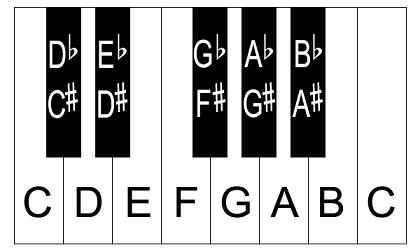A piece of trivia whilst I'm prepping other meatier posts...
PC Beep can change its note
Whilst I get the Python music stack working, a little code to show that the humble console beep can in fact have its note frequency changed. The following beeps from Middle C up through the octave.
Option Explicit
'http://www.devx.com/vb2themax/Tip/18340 Francesca Balena
Private Declare Function BeepAPI Lib "kernel32" Alias "Beep" (ByVal dwFrequency _
As Long, ByVal dwMilliseconds As Long) As Long
Private Const lMiddleC As Long = 257 'https://pages.mtu.edu/~suits/notefreq432.html
Sub Test()
Dim lNoteLoop As Long
Dim i As Long
For i = 0 To 12
lNoteLoop = lMiddleC * (2 ^ (i / 12))
BeepAPI lNoteLoop, 500
Next
End SubAre black and white keys cyclically asymmetric?
Also on music trivia, a little program that illustrates that an octave has 7 white keys and 5 black keys and that if one shifts one key at a time down the keyboard (or up, doesn't matter) that the configuration of black and white keys is unique.

Option Explicit
Sub Test()
'* as per diagram http://www.piano-keyboard-guide.com/wp-content/uploads/2015/05/piano-keyboard_diagram_2.jpg
Dim sKeys As String
sKeys = "WBWBWWBWBWBW"
Dim sShiftingKeys As String
sShiftingKeys = sKeys
Debug.Assert Len(sKeys) = 12
Dim dic As Scripting.Dictionary
Set dic = New Scripting.Dictionary
dic.Add sKeys, 0
Dim lLoop As Long
For lLoop = 1 To 11
sShiftingKeys = Right(sShiftingKeys, 1) & Mid(sShiftingKeys, 1, 11)
dic.Add sShiftingKeys, 0
Next
Debug.Print VBA.Join(dic.Keys, vbNewLine)
End SubThe above code outputs the following unique set of combinations (I think the uniqueness is driven off 7 and 5 being prime numbers)...
WBWBWWBWBWBW
WWBWBWWBWBWB
BWWBWBWWBWBW
WBWWBWBWWBWB
BWBWWBWBWWBW
WBWBWWBWBWWB
BWBWBWWBWBWW
WBWBWBWWBWBW
WWBWBWBWWBWB
BWWBWBWBWWBW
WBWWBWBWBWWB
BWBWWBWBWBWW
No comments:
Post a Comment